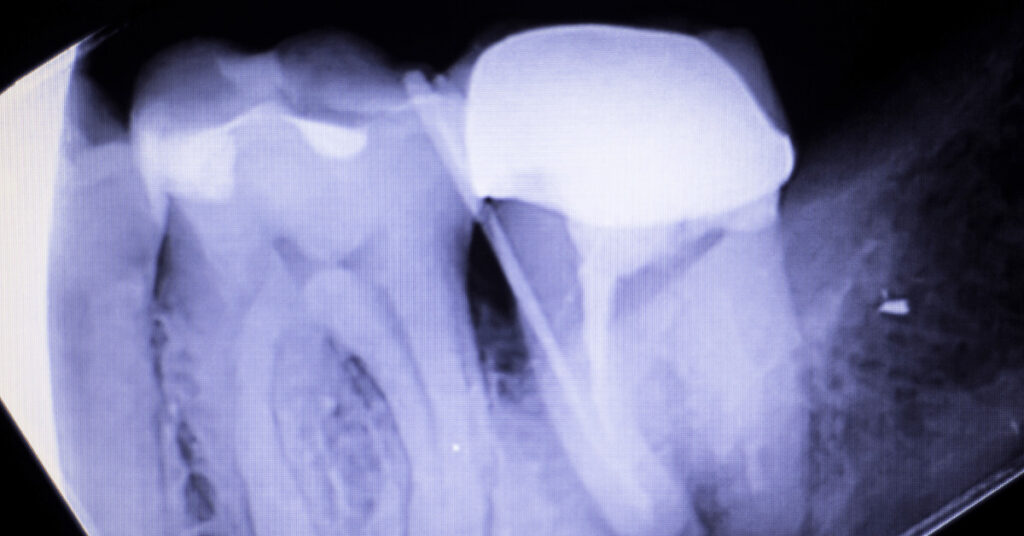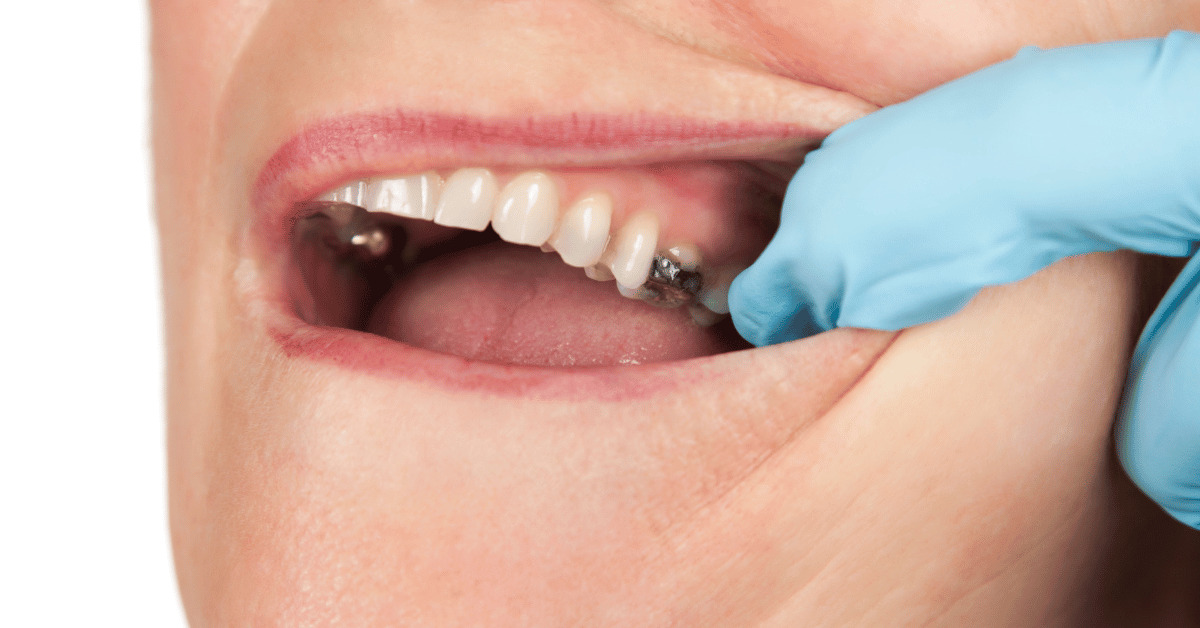When you have a half-broken molar tooth, it is easy to jump to the conclusion that this is the start of a very big and expensive problem, or a very painful one. The worst-case scenarios are running through your mind. But chipped tooth repair is very easy today, whether your molar is half broken, or in the early stages of cracking and breaking. Half-broken molar tooth repair can be easy with a few trips to the dentist. In most cases, a half-broken molar tooth that is broken in half can be fixed, and if not, the situation can be treated easily.
There are many reasons why a molar will break or why some of it will fall out. You might break it from eating the wrong thing, from grinding your teeth during your sleep, or even an extreme temperature change in your mouth. There are a few different stages of broken molar teeth. They can start as craze lines, go right down to the gum line, or become a completely split tooth that can not be saved. Still, even when you have a half-broken molar tooth, there are treatments that can help you to get your mouth back in working order. Use this guide when you have a broken molar tooth and learn what to do to prevent it and treat it quickly and efficiently.
Causes of Broken Molar Teeth
There are many different causes of broken molar teeth and half-broken molar teeth. There are also many different types of broken molar teeth, and half-broken molar teeth. Age is a very common cause of broken teeth, as with age, the teeth begin to break down naturally. As you get older, so do your teeth. Your teeth after your skin are also the number one thing in your body that gets exposed to a wide range of chemicals and products every day. Getting older means that your teeth will weaken naturally in time.
Hard foods, of course, will also always be a cause of broken teeth. If you are chewing on popcorn kernels or hard candy, you can run the risk of breaking a tooth. The risk is greater when you are aging and your teeth are already weakened. Having a number of dental treatments in your life will increase the age of your teeth and also weaken them. If you have many fillings over the course of your life or several root canals, you are going to experience weakened teeth. When the filling falls out, your tooth could become more brittle and weakened in time.
Trauma to your teeth such as teeth grinding or sports activities can also result in broken teeth. Any kind of physical injury or accident will also lead to broken teeth. In the case of injury, a broken tooth is not going to undergo multiple stages of cracking and breaking, but will simply break and need repair. For teeth grinding, it is a different story. It is estimated that approximately one in three adults grind their teeth during the day, and one in ten grind their teeth at night. This can slowly lead to tooth problems like a broken tooth.
Another very common reason that teeth break is sudden temperature changes in the mouth. If you have a hot drink such as tea or coffee, for example, and then drink a glass of ice water, you could cause your teeth to weaken and you will break a tooth that way. This is also a sudden break, but still, a sudden break caused by a temperature change is likely a broken tooth that has been a broken tooth in the making for some time. If your tooth is broken or weakened already, drinking hot and then very cold beverages or food can be the tipping point of a broken tooth problem.
There are different kinds of broken teeth, all indicating various stages of teeth breaking. An initial stage is the craze line stage, where small cracks appear on the outside of the tooth. You will just see the cracks here, you won’t feel any pain. This is not a broken tooth that needs treatment. A fractured cusp is a broken tooth that will occur due to a broken or chipped filling. In some cases, the filling may fall right out. You may not feel pain with this kind of break either.
For more serious breaks, there are breaks and cracks that go right into the gum line. If it has not reached the gum line, the tooth may be saved. If it has, you may need to have the tooth pulled. A completely split tooth is one where the crack goes below the gums and the tooth can often be split in two, and the tooth broke off with the root still in. In this case, it will be difficult to save the tooth. Vertical root fractures are breaks where the crack begins outside of the gums and moves vertically. You may not see too many symptoms here, but the tooth can still become infected.
Whether you are dealing with an early-stage half-broken molar tooth or need serious half-broken molar tooth repair, a visit to the dentist’s office can calm many of your worries. It can feel like the end of the world with your dental woes, but it is not. When you have a broken tooth, it is important to seek treatment as early as possible. The risk of infection is high when you have any exposed area of your gums in your mouth. An infection can become an abscess which increases your risk of a serious health problem such as sepsis which will invade your entire bloodstream. If you have swelling, pain, and pus in your mouth, you may be facing a tooth infection.
Any tooth can break at any time if you are subjected to any of these common causes of the tooth breaking. It is critical to call your doctor or dentist as soon as you can when you are experiencing a broken tooth, even if you do not have any pain.

What to Do if You Broke Your Molar
If you break your molar, the worst thing you can do is nothing. Even if you do not experience any pain right away, you could still be subjecting your mouth and teeth to greater damage or harm. You may increase your risk of infection, and risk of losing more teeth. There are different kinds of treatment for a half-broken molar tooth.
Bonding uses a plastic chemical to glue teeth back together. This is a very simple dentist procedure that has you feeling better later that day. A crown may be needed if you have a seriously broken tooth, depending on the break. In this case, a dentist will add a porcelain cap to your tooth and have it uniquely fitted to your mouth so that it looks like a tooth again. This is an ideal solution when you can’t get a veneer. A veneer treatment is one where porcelain is added over the front of your teeth to create a perfectly shaped new tooth, or the image of a perfectly shaped tooth. Veneers are easy to use as a treatment when you have a large amount of your natural tooth left.
How to Protect Teeth From Breaking Off
When you want to avoid a half-broken molar tooth, you need to make a few lifestyle adjustments. Good dental hygiene will always be the number one way to prevent these issues from happening. That means regular brushing and flossing, using mouthwash daily, and ensuring you use fluoride to brush your teeth.
If you have weaker teeth or are aging, you also want to be careful about eating hard foods and hard candies. Wear mouthguards when you want to be preventive in sports and prevent injuries. You also need to avoid stress or find coping mechanisms that can prevent you from grinding your teeth at night. Additionally, adding dental visits to your life regularly can go a long way towards preventing the problem of a half-broken molar tooth or a chipped tooth repair.
Prevent Chipped Tooth Repair Problems
When you have a half-broken molar tooth, the worst-case scenarios will come to your mind. A molar that is broken completely in half can not be fixed completely in many cases, but the tooth can still be treated. It will all depend on what kind of break you have and how much tooth you have left. In many cases, one trip to the dentist to have it pulled can solve the problem easily and quickly. Cracked teeth can not heal, and can lead to serious infections. Any time you have a dental issue putting the integrity and strength of your teeth at risk, contact a doctor or dentist to begin the steps of treatment. The outlook for a broken tooth is typically very optimistic, the sooner you start treatment. Within a few hours or days, you can have a repaired tooth as if nothing happened at all.
